It’s a question every dog trainer hears. Perhaps not specifically sticks, but we frequently hear the question: “Why is my dog eating X?”
Rabbit poop, acorns, rocks, pecans, bark, plastic, grass, you name it.
Despite our best intentions as owners, at times it seems as if we spend 25% of the time in the yard groaning and saying “What’s in your mouth?!”
And while it’s an incredibly common occurrence, especially with sticks, it can be a dangerous habit as well as an undesirable one. Sticks present potential hazards like splinters in the gums and sharp ends that can cause serious damage to the esophagus and intestines.
So, how do you make your pooch stop eating sticks? That’s where training comes in.
We’ll offer some management and training options to help your dog overcome this tiresome and unhealthy habit below.
Key Takeaways: Why Is My Dog Eating Sticks?
- Stick-eating is a pretty common issue in dogs. A variety of things may trigger dogs to gnaw on sticks in the backyard, ranging from medical issues to hunger to boredom.
- Despite being a common behavior, you should NOT allow your dog to chew on sticks. Sticks can injure your dog in several ways, and sometimes, these injuries can be very serious (and expensive to treat).
- There are a few different ways you can stop your dog from eating sticks. Assuming your dog’s stick-eating behavior isn’t caused by a health condition (which will require your vet’s help to treat), you’ll simply have to implement management or training strategies to correct the problem.
Why Do Dogs Eat Sticks?
Before we dive into the training methods you’ll want to use to stop your dog from eating sticks (essentially, the “how” to address the issue), let’s discuss the reasons why your dog may be snackin’ on sticks.
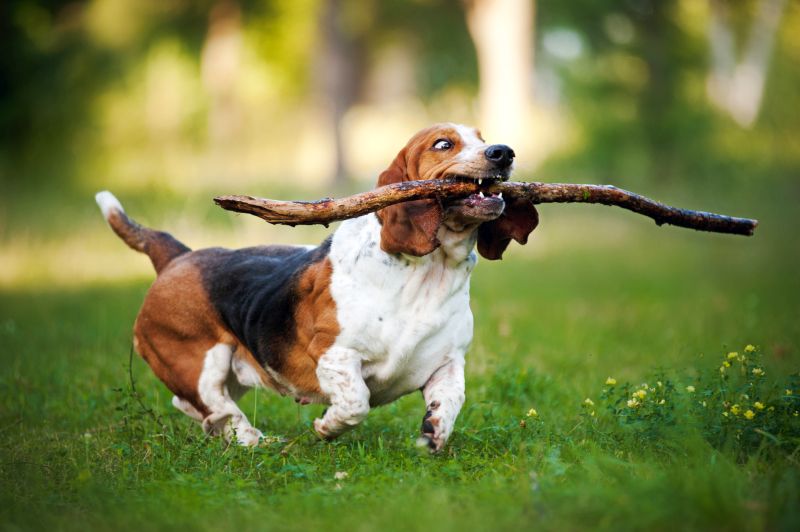
It’s always good to really have a full understanding of the reasons that something is happening, so that you can better create a plan to help solve the problem.
Medical Conditions
My mantra is “always rule out medical causes first.” And while stick eating seems like an odd symptom of a medical problem, it actually can be.
The underlying medical problem could be as simple as a calorie deficiency, or as odd as a condition like pica, which causes compulsive eating of foreign objects.
Some of the most common medical conditions that may trigger your dog to eat sticks (or many other weird things) include:
Nutritional Deficiencies
Much like you might hear about pregnant women eating soap or dirt because they need additional minerals, dogs too can start eating strange things in a quest to obtain the nutrients they are otherwise lacking.
Digestive Disorders
While some people drink a glass of milk (or in my case, non-dairy milk) to settle heartburn or an upset stomach, dogs at times will resort to trying anything to quench a queasy gut.
Hunger
Plain and simple, if your dog is really hungry, he might try eating things he finds in the yard.
Of course if your dog is a healthy weight or even a touch overweight and still seems starving all the time, you might need to look into other issues like thyroid conditions.
Dental Issues
Think of a stick as a huge tooth pick. Sometimes you just want to gnaw on something to ease gum discomfort.
This is especially true for young pups who may be teething. For these guys, find some appropriate puppy teething chew toy alternatives instead!
But really, just about any kind of dental issue may cause a dog to chomp on sticks. Consider taking your dog to a vet and get a teeth cleaning to make sure your dog’s pearly whites are in good shape.
Pica
Pica is a somewhat strange condition, which humans can suffer from too. It is a psychological disorder characterized by an appetite for substances that are typically not nutrient dense.
In other words, it usually involves the consumption of stuff that isn’t food (or even edible, in some cases).
Behavioral Reasons
In addition to medical issues, there are some behavioral reasons your dog may start chompin’ on sticks in the backyard. We’ll talk about some of the most common ones below.
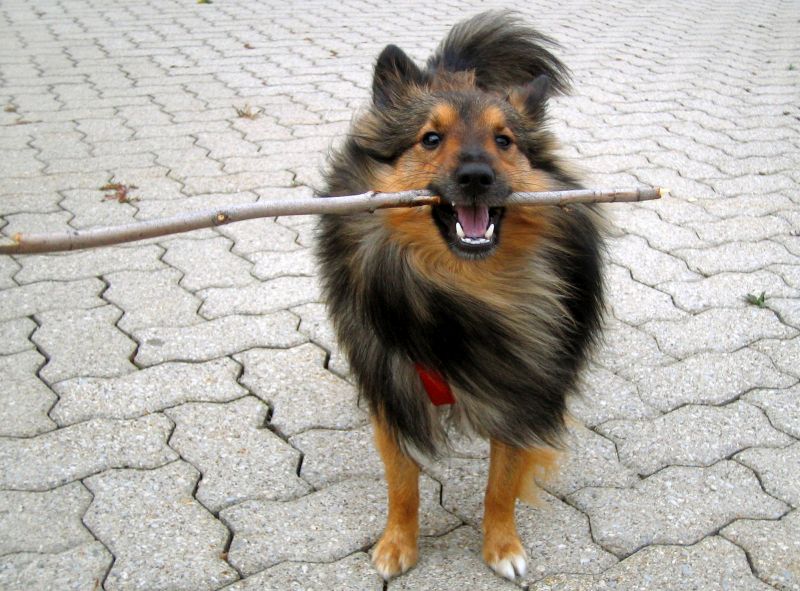
Boredom
Understimulated dogs are often bored, and gnawing on a stick is something to do! And boy, do dogs like to chew.
Anxiety
Along with being entertaining, chewing can be an excellent outlet for nerves or anxiety.
Attention Seeking Behavior
If every time your dog goes and grabs a stick, you jump up, squawk “What do you have!? Give that to me!” and then start playing “chase”, then it is likely your dog will continue to do this game.
After all, you were boring, but when he got the stick, you became fun.
Habit
One day (and for whatever reason), your dog just started chewing on sticks, and now the behavior has become part of his daily routine.
No Appropriate Outlet for Energy
Dogs deprived of a positive outlet for their energy may come up with unusual ways to burn off some steam. So, the stick gets it instead.
Many dogs who don’t get adequate exercise or sufficient mental enrichment will pick up other habits to cope with the boredom..
Dangers of Stick Eating in Dogs
It’s crazy to think stick eating could be so hazardous. After all, they’re dogs! Dogs chew sticks all the time. And that is true.
Not every stick is going to cause an issue, but when one does finally an issue, it can be a whopper.
The stick related medical injuries I encountered back in my vet tech days tended to stick (eh, get it?) to three categories:
- dental
- digestive tract
- toxicity
Dental issues often arise when splinters or pieces break off, and injure a dog’s gums, tongues and teeth. Sometimes these problems resolve themselves, but other times they result in infections or abscesses. In one case I recall, a dog needed to have six teeth removed after eating a stick.
Digestive tract injuries are even more dangerous. Some stick-eating episodes result in perforated throats or intestines, while others end up causing partial airway obstructions, or gut irritation that causes serious bowel problems.
Finally, some sticks can be contaminated with toxic substances, which can cause your dog to fall ill. It’s hard to know what your dog “got into” when it could be as simple as some pesticides that were sprayed on the stick before he picked it up.
We, as humans, sometimes don’t think of that, but trees and sticks are outside all the time.
Perhaps, you don’t know what fertilizer your neighbor was using or that he was putting out weed killers. Then your friendly squirrel brings the stick over the fence from your neighbor’s yard to yours. Voila! Accidental poisoning.
Heck! It doesn’t even have to be a poison. Fungi, molds, and other biological things can grow on sticks and cause your doggo to fall ill.
What Should I Do if My Dog Does Eat a Stick?
It’s a good idea to call the vet anytime you notice your dog eating a stick. In many cases, your vet will give you a “wait and see” order, but he or she may also think it is important that you bring your pooch in immediately.

While you’re waiting and monitoring your dog, keep an eye out for specific symptoms:
- Obvious discomfort
- Pain
- Bleeding from the mouth
- Bleeding from the rectum
- Vomiting
- Straining to poop
- Diarrhea
- Behaving oddly
Do not attempt to induce vomiting unless your vet instructs you to do so. Even if the stick went down without causing an injury, that doesn’t mean it’ll come back up smoothly too. By forcing your dog to vomit you could accidentally create a bigger problem.
Plus, many at home “induce vomiting” techniques are dangerous.
Stop your Dog from Eating Sticks: Steps for Success
Once you’ve figured out why your dog is eating sticks, you can come up with a program to help stop the behavior.
If the cause is health-related, you’ll want to solicit your vet’s help in addressing the problem, but most other causes of stick-eating behavior are best addressed via management or training strategies.
Stick-Stopping Management Strategies
One of the simplest ways to keep your dog from eating sticks, is to manage his environment. “Managing” your dog’s environment essentially means adjusting your dog’s surroundings, schedule, or interactions, to prevent a problematic behavior from ever happening.
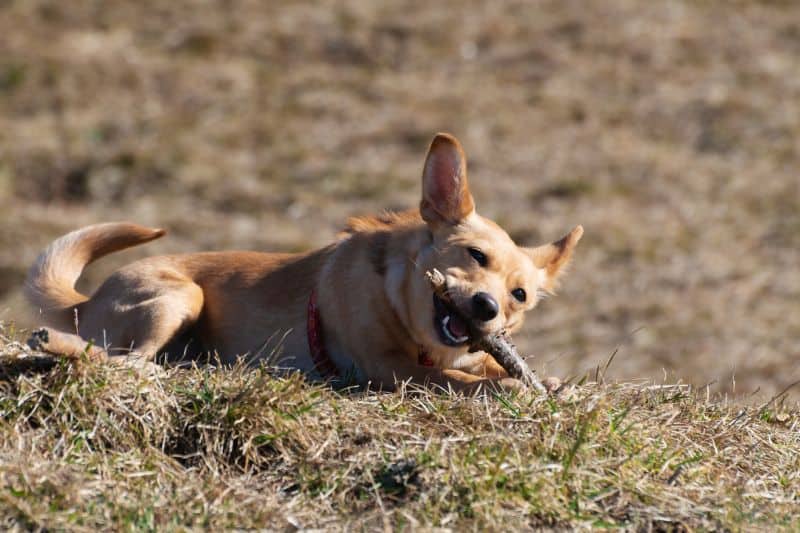
Keep the Yard Stick Free
After all, your dog can’t eat the sticks, if there are no sticks. Just go out in the yard before playtime and collect any that have fallen.
Monitor Your Dog While Outside
I’m a big fan of this one, because let’s be honest, sticks aren’t our only concern right? By actively being outside with your dog, you can make sure he’s not digging, eating, climbing, or escaping.
It also gives you, as the owner, more play and bonding opportunities with your dog, which is a nice bonus.
Provide Alternative and Appropriate Chews
Providing your dog with safe chews he can chomp on is a great way to reduce stick-eating behavior. This is especially true for really “chewy” dogs and puppies going through their first or second chewing phase.
If your dog has really fun alternatives, he is much more likely to leave sticks alone.
Eliminate or Identify Medical Conditions
As mentioned earlier, it is always important to identify and address any medical issues that may be causing your dog to eat sticks. If, for example, your dog has mineral or nutrient deficiencies, talk to your vet about switching to a food that will correct the deficiency.
On the other hand, if your doggo has pica, then you will want to train him to wear a basket muzzle while in the yard to keep him from eating inappropriate things.
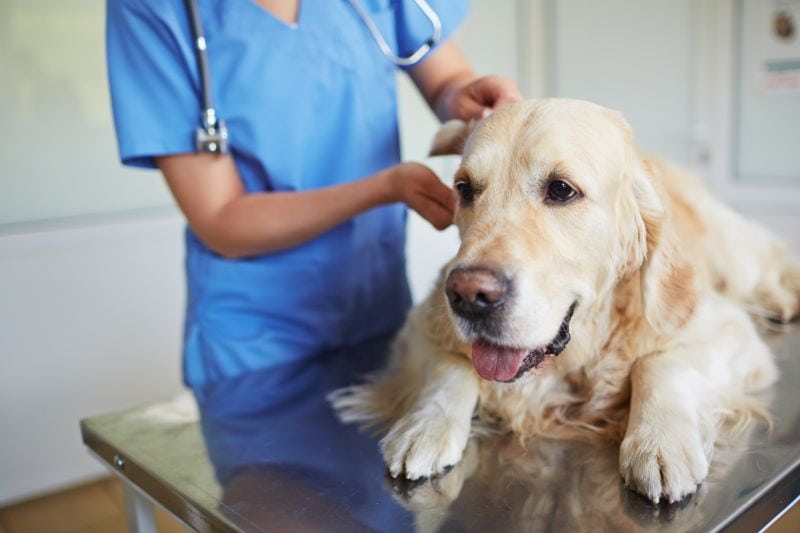
Training Strategies
Managing your dog’s environment is a good way to help address stick-eating behavior, but it doesn’t always work.
Accordingly, it is wise to employ training solutions alongside your attempts to manage your pup’s environment.
Train a “Leave It” Command
A “Leave it” command means “stop what you’re doing/don’t do that/don’t go there.”
Practice inside, and start out by using food. Always practice in a manner that if you fail, there is no medical or safety repercussion.
I train this skill by sitting on the floor and holding a fistful of food in front of my dog. He may sniff at it, paw at it, lick me…I don’t care.
I wait until he backs off at all (of his own accord) and then reward the behavior by giving him some of the food.

Don’t worry about using a vocal command yet. Teach him the skill first; name it later. Slowly I start making the food more visible or accessible and each time my dog backs off he gets reinforced.
Once I can reveal an entire pile of food on the floor, yet my dog still backs off, I know I’m ready to name the skill. In other words, you’re tying the new cue (“Leave it,” or whatever cue you’d like to use) to the behavior. So, you say “Leave It” while putting the food down.
When he doesn’t go for the food, reinforce the behavior by giving him some of the food or a treat. And scritches. Lots of scritches.
Please note, I never let a dog eat the food off the floor that I’ve put down. I always hand him the food. I don’t want my dog ever thinking he can go back to the thing I told him to leave to enjoy the tasty morsels.
Slowly, you evolve this game to dropping food or objects, saying “Leave it,” and then reinforcing him when he does. I don’t ever let my dog pick up the item I told him to leave, even if he goes for it. If he does, I’ll block it with my hand or foot.
Eventually you practice this game in the backyard, where you’re most likely going to need it in real life scenarios. Next time you see your dog going for a stick, tell him to “Leave it.”
Once he does, reward him.
Make a Trade with Your Dog
Another training game you can do is to teach your dog to trade you items (sticks in this case) for treats or toys. By doing that, you can teach your dog to find sticks, but then bring them to you.
You can then put the sticks somewhere safe, and you know that your dog won’t take them off to chew up, but bring them to you instead.

You have to start out by having something as good as or better than what he has. And of course you can’t dictate what your dog thinks is better than a stick. Only he can do that. But once you’ve figured out which toy or treat is really awesome, you can start practicing a trade.
If I can, I’ll start practicing with toys or things that are OK for my dog to have in his mouth. He’ll have his toy, I’ll grab a treat and I’ll say “Wanna trade?” Boy oh boy does he! I offer the treat, he drops the toy, I give him the treat. Win-win.
Of course, in real life scenarios when he has something I need right away, I just grab the treat and come over with a smile. “Wanna trade?” Usually my dog is happy to give me a stick for a piece of cookie!
The things you absolutely cannot do is chase your dog around, wrestle it out of his mouth, or squawk like an angry parrot. These behaviors on your part are more likely to create hiding or sneaking behaviors on your dog’s part. Worse, they could cause your dog to start guarding his sticks.
If you’re constantly taking and never giving, you’ll be viewed as a thief who your dog needs to protect his goodies from. Don’t be a thief, be a business person.
And remember, if your dog says “No thanks, not good enough,” you have to respect that. Go find something better.
If it’s really an emergency, I’ll babble like a loon, getting my dog excitedly following me to the pantry for some human food. Anything to keep him with me, excited, and not eating whatever is in his mouth.
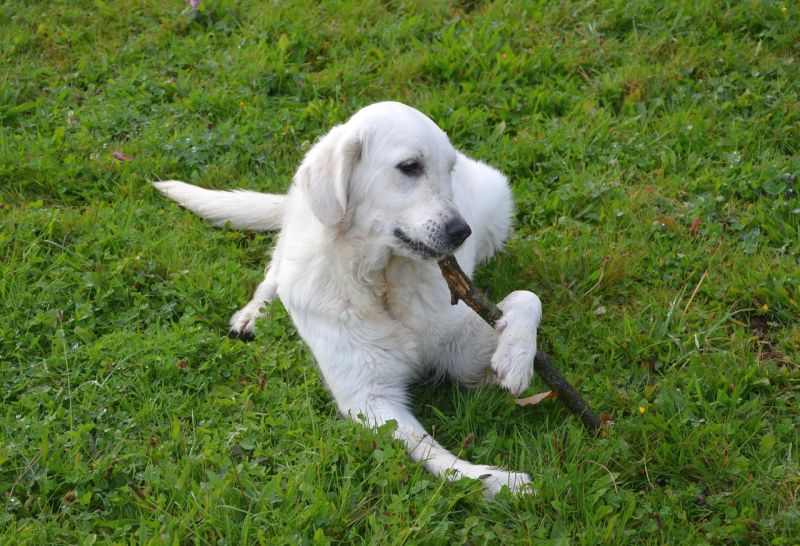
Stick Eating FAQs
Stick-eating behavior is pretty common, and it tends to cause owners to have a ton of questions. But don’t worry! You’ve got questions; we’ve got answers!
Is it OK for my dog to eat sticks?
Nope. Alright, let me rephrase that. It’s a natural behavior, but it can have some really serious consequences. So while your dog is not doing anything “wrong” by eating sticks, he is doing something dangerous.
Why do dogs like to eat sticks?
There are a myriad of reasons dogs like eating sticks, including boredom, anxiety, nutritional deficiencies, and medical conditions. Address any potential medical issues first before moving on to training.
Should I take sticks away from my dog?
Yes. But not without trading for them. See the training section above for more info.
What happens if a dog eats wood?
Sometimes nothing happens when a dog eats wood, but sometimes it can cause a perforated gut or esophagus, splinters in the gums, choking, or general gastrointestinal distress.
Why is my dog obsessed with sticks?
Your dog may be obsessed with sticks because he views them as a source of play or something fun to chew on. Alternatively, if you have a bad habit of hoarding them, he might believe they are valuable.
My dog has eaten a stick and is now throwing up. What should I do?
Yikes! Call your vet right now. If you get medical attention swiftly, he is more likely to be alright.
***
Dogs may eat sticks a lot, but because it can be dangerous, it is something you’ll want to address. Just follow the steps outlined above or work with a private trainer if you’re unable to achieve success.
Do you have a dog with a stick problem? What have you done to address it? Has anything you’ve done worked particularly well? Tell us all about it in the comments below!
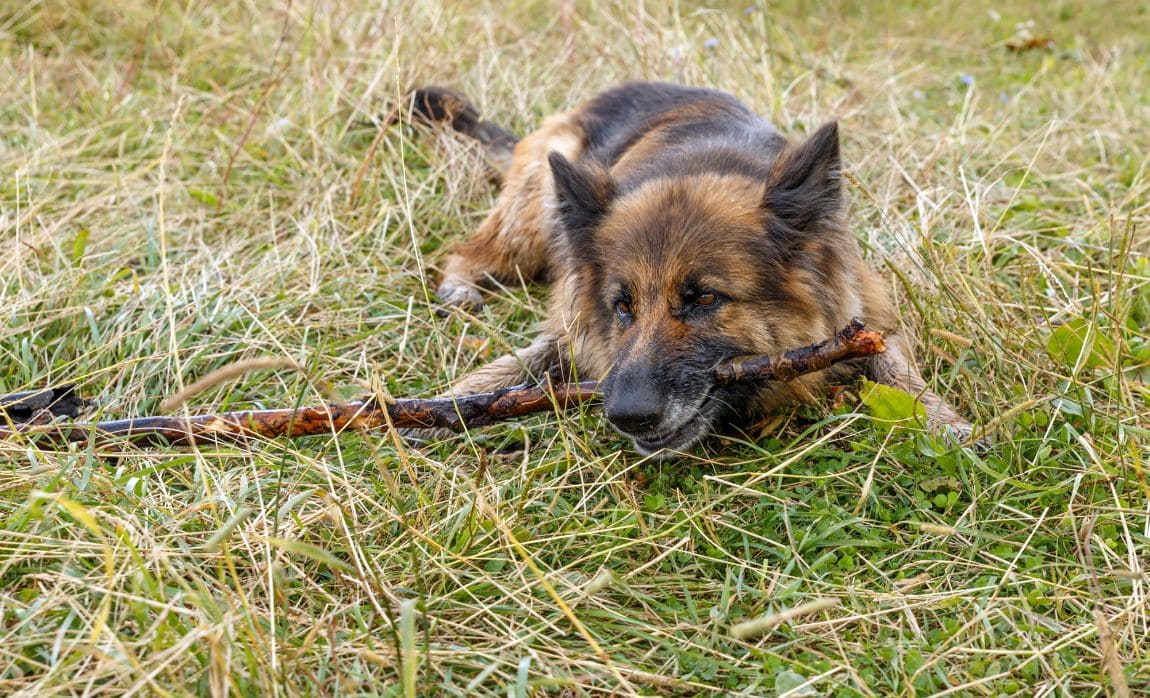





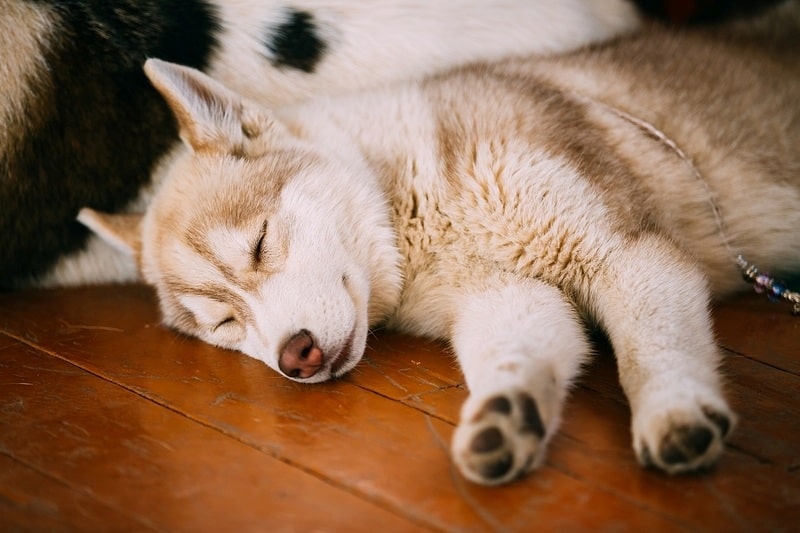
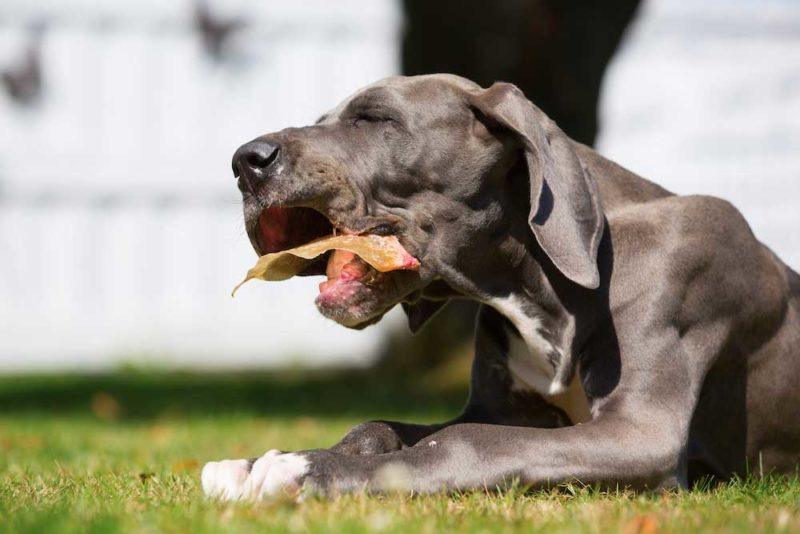
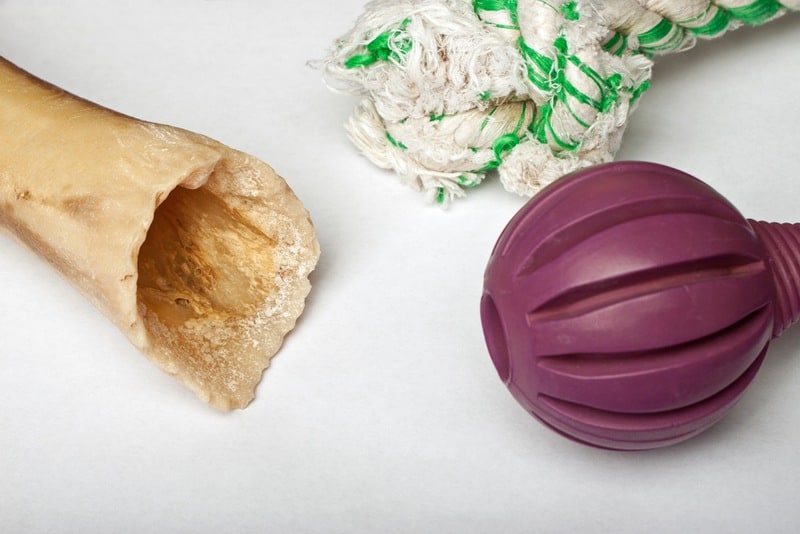
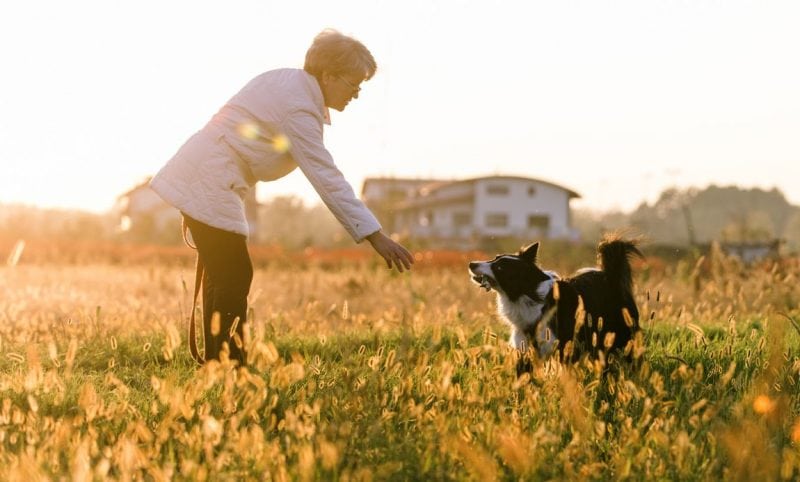
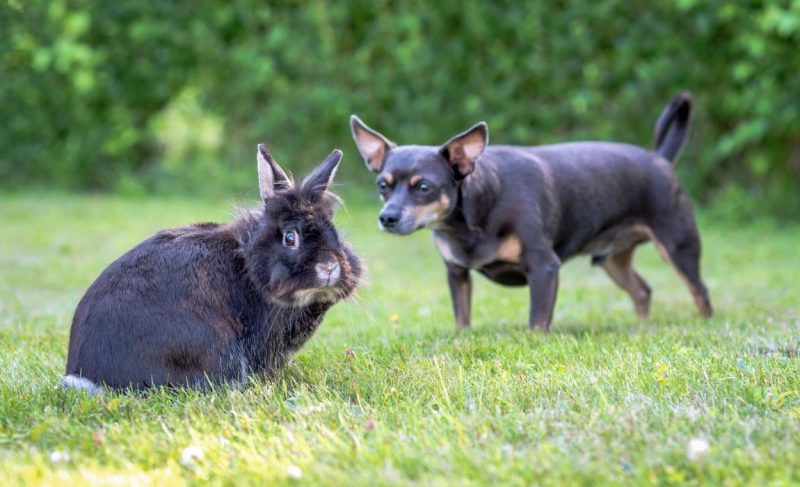
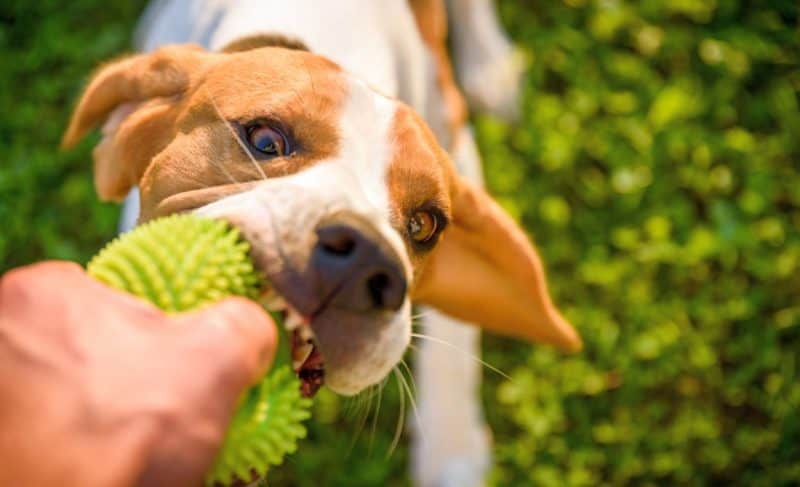

Leave a Comment